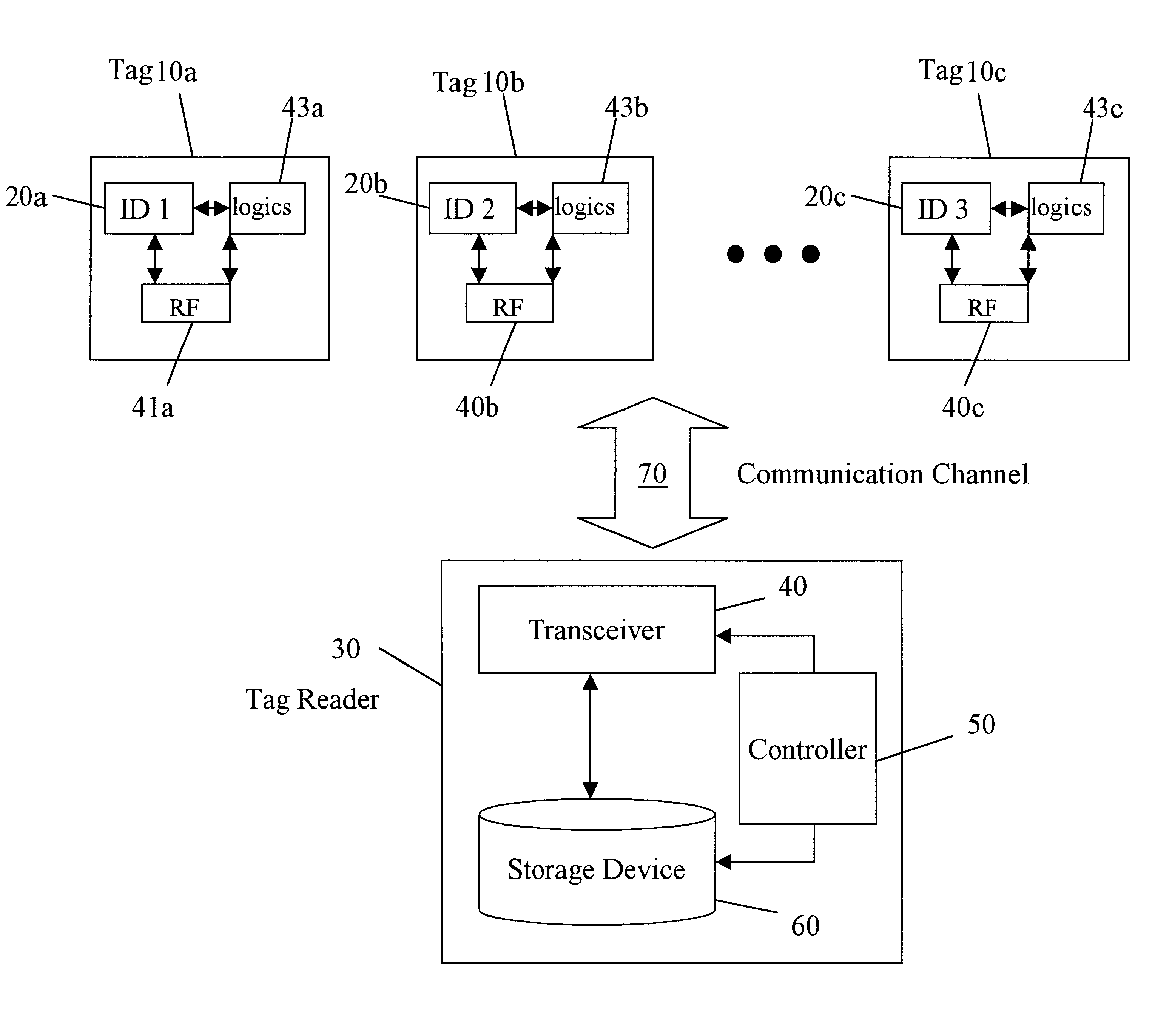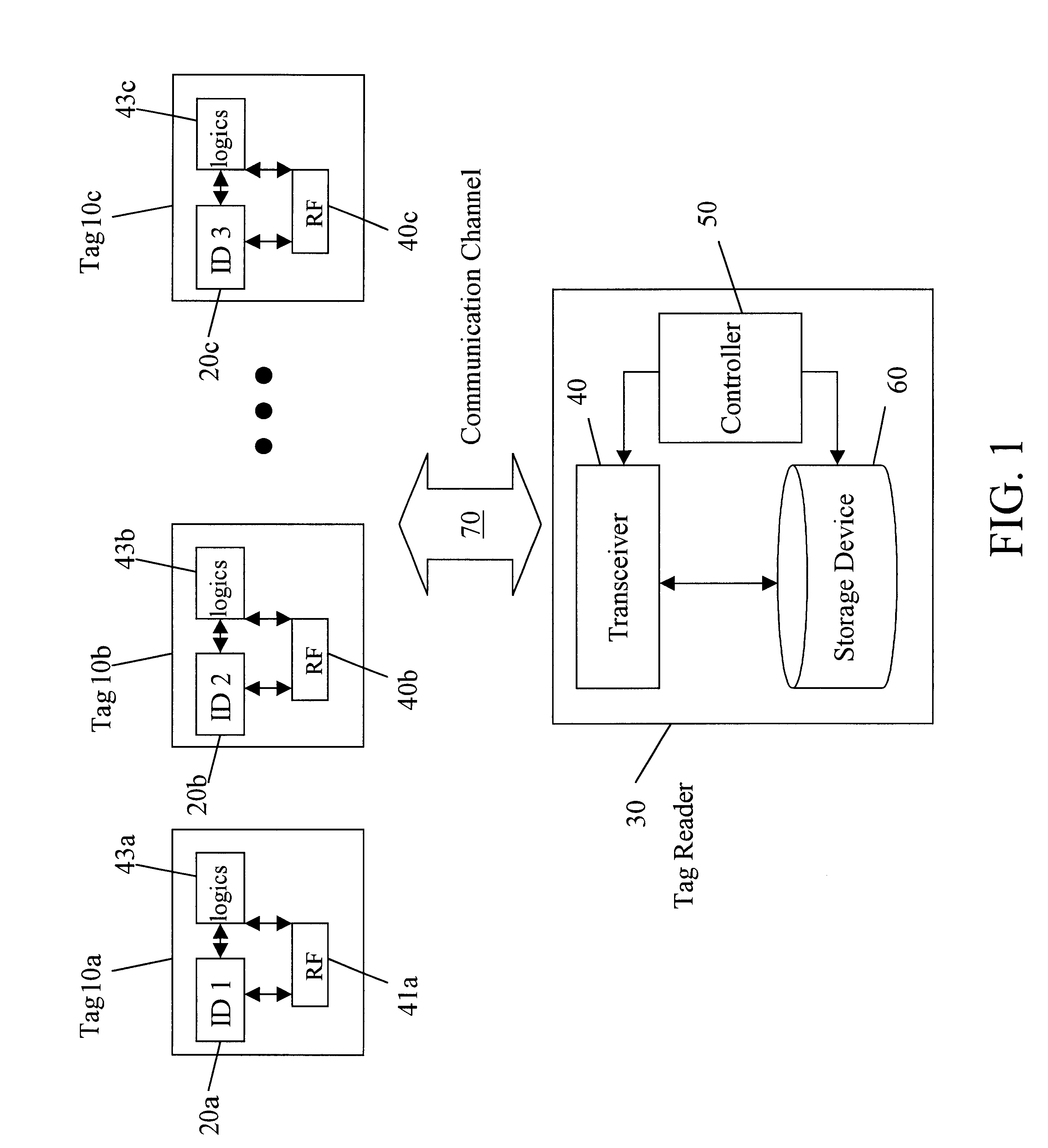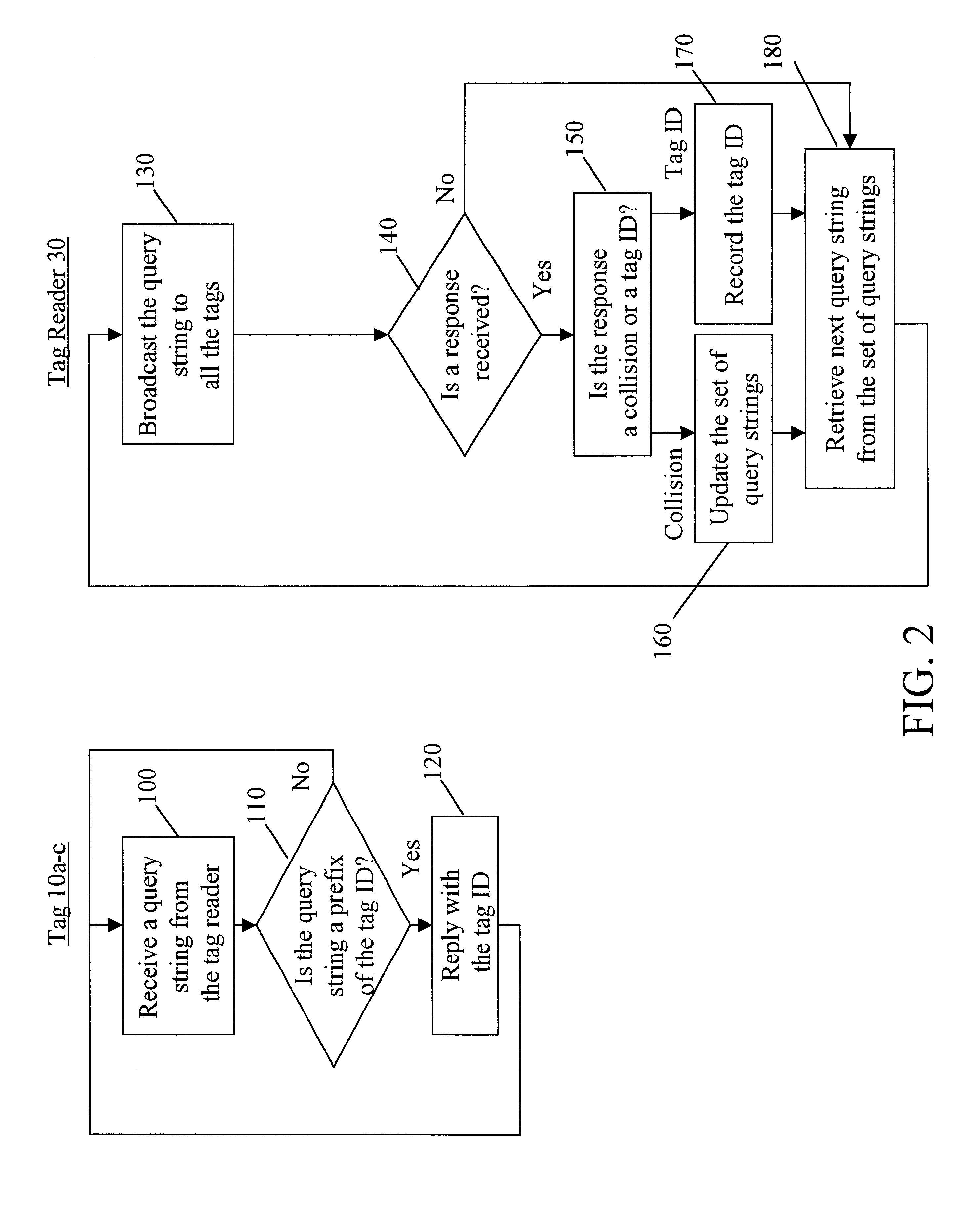Efficient memoryless protocol for tag identification
a memoryless protocol and tag technology, applied in the field of electromagnetically-tagged tag identification, can solve the problems of inability to achieve the desired effect of tags, tags are very limited in memory, power and computation capabilities, and additional challenging issues in the tag system
- Summary
- Abstract
- Description
- Claims
- Application Information
AI Technical Summary
Benefits of technology
Problems solved by technology
Method used
Image
Examples
Embodiment Construction
Referring to FIG. 1, in an embodiment according to the invention, a tag identification system includes an electromagnetic tag reader 30 and a number of electromagnetic tags 10a, 10b and 10c (only three are shown). Tags 10 are located at a distance within a readable range of tag reader 30, and communicate with the tag reader through a single electromagnetic communication channel 70. There is no message exchange between tags 10.
Tag reader 30 includes a transceiver 40, a storage device 60 and a controller 50. Under control of controller 50, tag reader 30 broadcasts query signals stored in storage device 6Q through transceiver 40 to tags 10 via communication channel 70. For the purpose of identifying the tags, each query signal contains a query string that may be a tag ID or a prefix of a tag ID.
Tags 10 have minimal computing circuitry. Tags 10 do not have batteries or any independent power sources, and therefore are passive. Except for an incremental matching technique that will be des...
PUM
 Login to View More
Login to View More Abstract
Description
Claims
Application Information
 Login to View More
Login to View More - R&D
- Intellectual Property
- Life Sciences
- Materials
- Tech Scout
- Unparalleled Data Quality
- Higher Quality Content
- 60% Fewer Hallucinations
Browse by: Latest US Patents, China's latest patents, Technical Efficacy Thesaurus, Application Domain, Technology Topic, Popular Technical Reports.
© 2025 PatSnap. All rights reserved.Legal|Privacy policy|Modern Slavery Act Transparency Statement|Sitemap|About US| Contact US: help@patsnap.com



